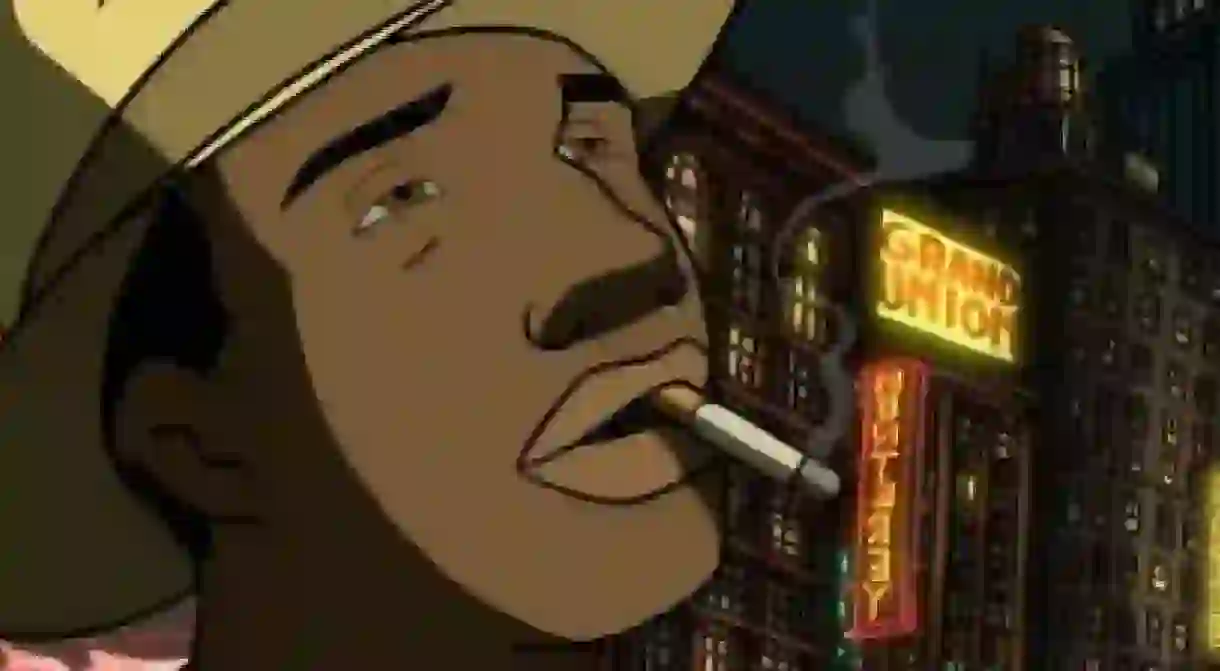Chico & Rita: A Visual Feast of Love and Music

Chico & Rita is an animated love story that captures the vibrant, cultural nuances of Cuba, France and America. It was awarded the Goya for Best Animated Feature Film 2011 and was nominated for Best Animated Feature Film at the 2012 Oscars. Directed by Fernando Trueba and designed by Javier Mariscal with music by Bebo Valdés, Chico & Rita is a tender and beautiful filmic masterpiece.
Chico & Rita is a love story between a young pianist and jazz songstress set against the vibrant and voluptuous exoticism of late 1940s, early 1950s Havana. As Rita’s sultry tones drift through the balmy air, a mesmerised Chico is rooted to the spot.
Rita’s vivacious character, Latino power and raw jazz talent lead her to New York, where she is catapulted into stardom. Chico follows as she begins this new phase of her life, leading to an unraveling of love and subsequent heartbreak. Both headstrong and passionate characters, the film is a beautiful depiction of the sacrificial and infectious nature of love, infused with an award-winning musical soundtrack.
Chico & Rita is not simply a love story between two individuals, but a tribute to the power of music itself. The film’s bebop and jazz flavours bring a stylish and nostalgic tone to the film. As Cuba teeters on the edge of the Revolution, this era also brings about the historically significant evolution of jazz and the film’s vibrant and varying colour schemes visually support this change in musical landscapes.
The director Trueba says; ‘You don’t have to be a specialist in Cuban history and American jazz to really enjoy the movie. But maybe if you know that period and that time, then you can find some small extra gifts.’
Renowned Cuban pianist, bandleader and composer Ramon ‘Bebo’ Valdés wrote the score for Chico & Rita, which is as spellbinding as its visuals. The character of Chico is based loosely on Bebo, who was a maestro in American swing, Classical European music and local styles. Bebo remains a true musical legend for his developments and adaptations in rhythms like mambo, and was especially known for revolutionising Cuban music with his batanga, a dance craze within music havens. Similarly to Chico, the circumstances of the Cuban Revolution threw Bebo into a quiet existence after defecting from Cuba and settling in Sweden. After 30 years, Bebo was rediscovered playing piano in a Swedish restaurant and he was once more returned to fame.
As the both Chico and Rita embark on musical journeys across the world, the cities are just as much protagonists as the lovers themselves. The animated film presents sharp contrasts as it moves from the tantalising Cuban sun into the depths of New York winter, through the streets of Paris and Hollywood to settle on the electrically charged skyline of Las Vegas. With specific colour schemes, urban detailing and music tailored to the location, the ambience and culture of each place is suitably captured.
The animation process was, in fact, an extensive and detailed one. During four weeks in 2007 the co-directors filmed Havana in order to ‘give the optical information of the actors’ movements to the animators, and also make more organic camera movements, more human’. Their filming captured movements and details to provide a platform from which the animators were able to inject ambience and urban personality. Cuba’s political outlook has slowed down urban development and the city appears much like it did fifty years ago, except for its now decayed and ragged edges – an injustice to the once magnificent Cuban architecture. However, a stroke of luck came during the research trip when the film-makers stumbled across photographs of Havana in 1949. With the era, styles and buildings perfectly preserved within the photographs, the task of creating an accurate aesthetic portrayal of 1940s Cuba became much easier.
The animation itself is a creative balance between real life and the animation style. It is the feeling and emotion the animators succeed in drawing out, a hard task considering the protagonists are being realised with the touch of pen to paper. Errando comments by saying ‘You have all these feelings that an actor is giving you, on the other hand we want the poetry that animation can provide. We spent about six months discovering the right balance’.
Fernando Trueba and Javier Mariscal succeed in producing a film using contemporary techniques that wonderfully capture an era of nostalgia, political unrest and musical evolution. Uniting music and love, Chico & Rita is a heartwarming, passionate and beautiful visual feast.













